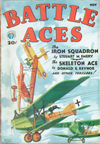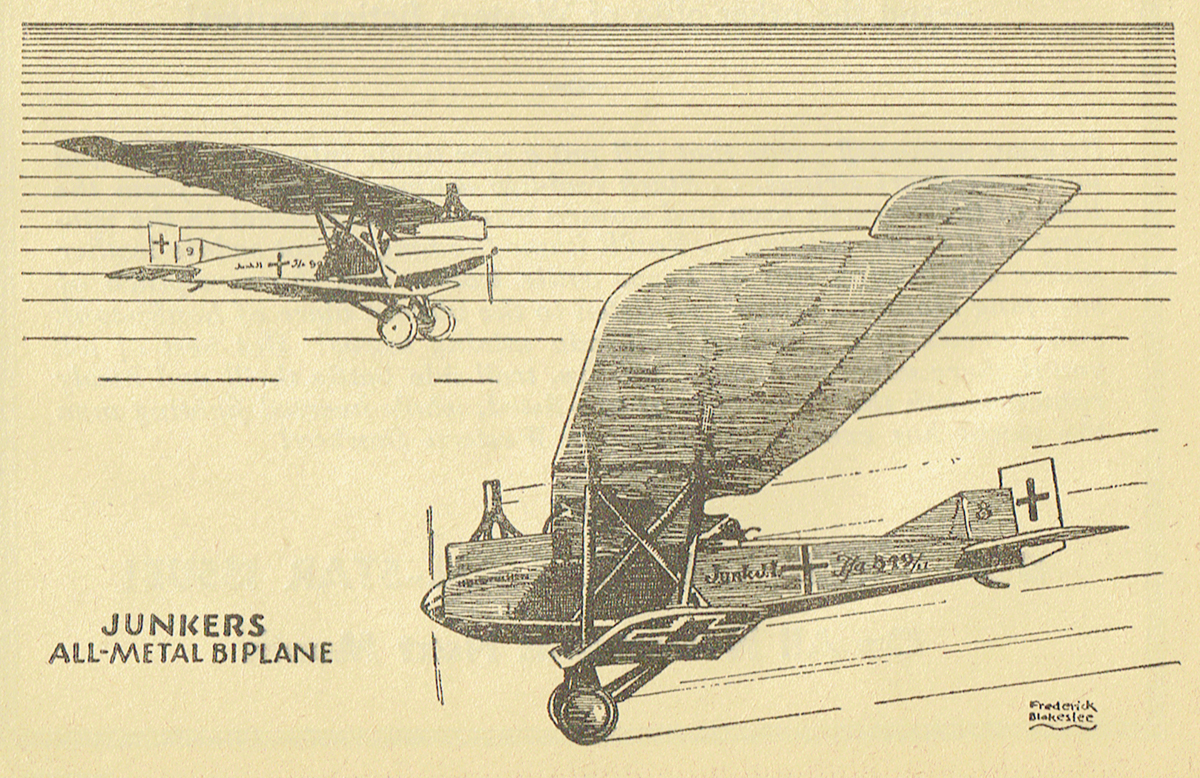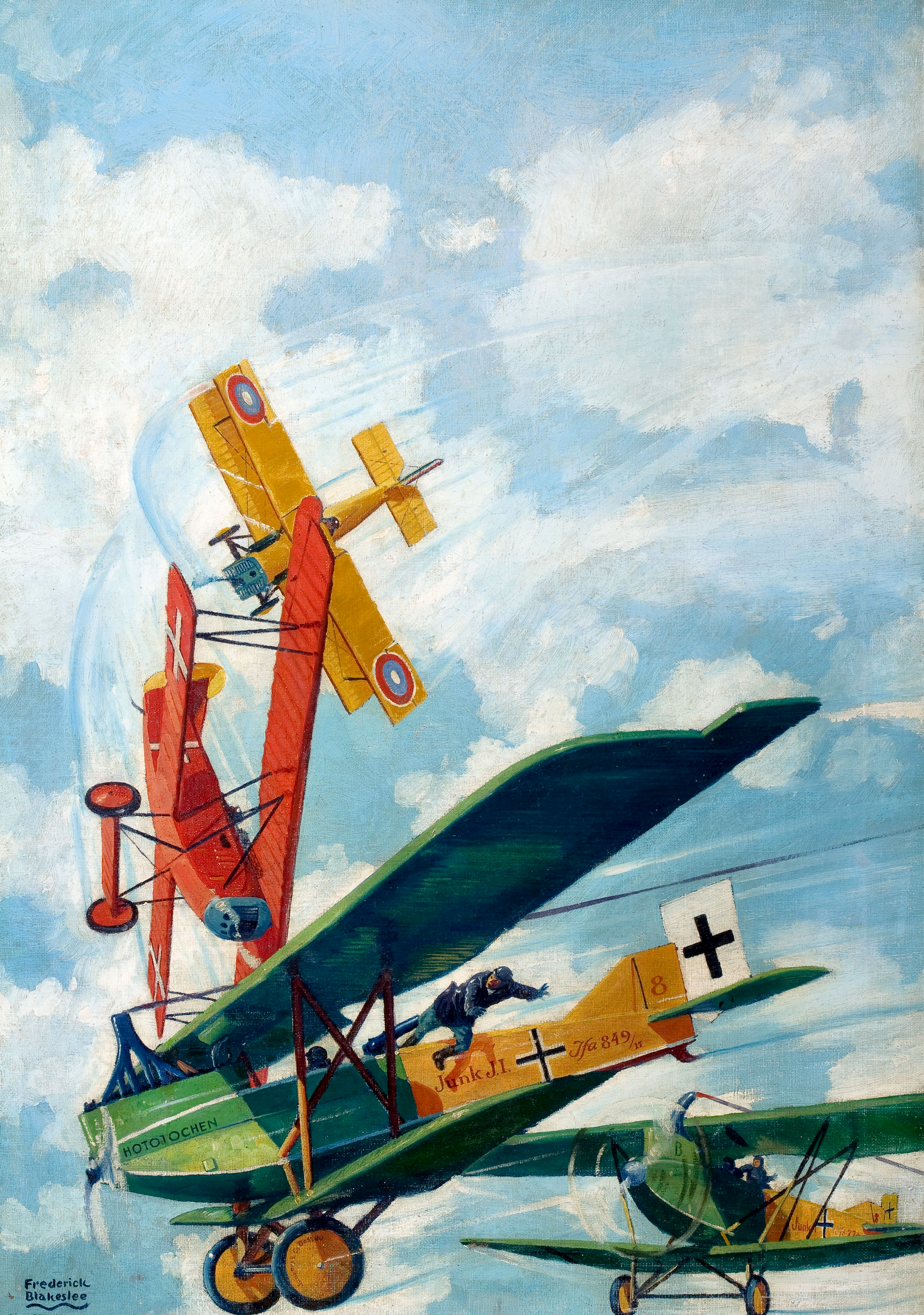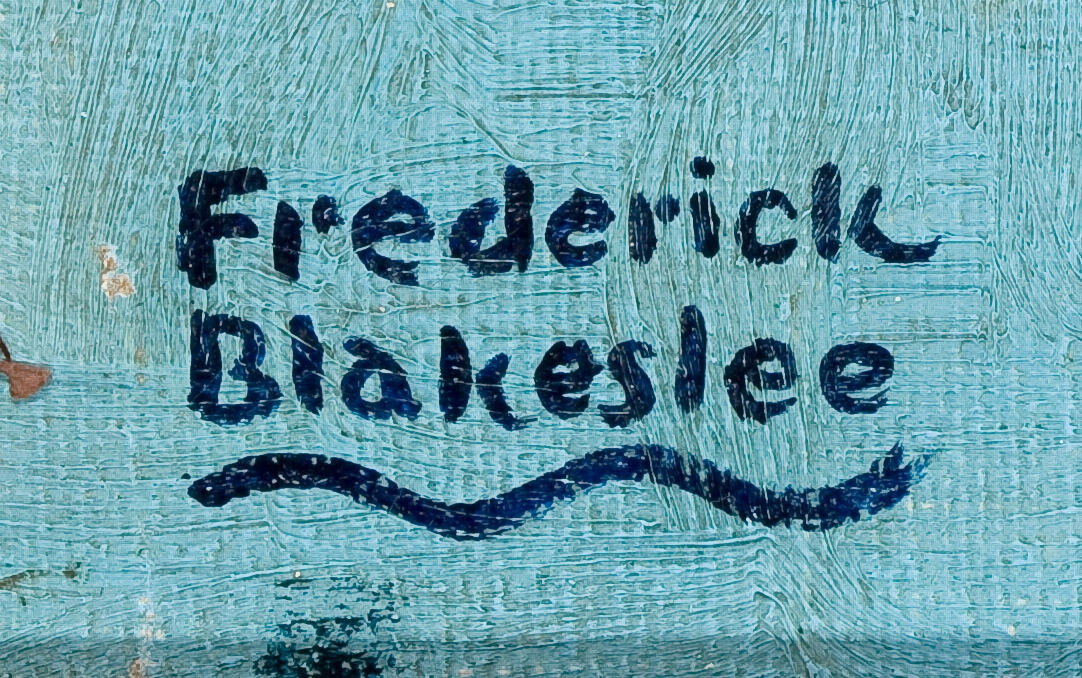“The Junkers Biplane” by Frederick Blakeslee
Editor’s Note: This month’s cover is the eighteenth of the actual war-combat pictures which Mr. Blakeslee, well-known artist and authority on aircraft, is painting exclusively for BATTLE ACES. The series was started to give our readers authentic pictures of war planes in color. It also enables you to follow famous airmen on many of their amazing adventures and feel the same thrills of battle they felt.
 THIS is the story of a combat in which three German ships were brought down by one American flyer, without a shot being fired by either side. The cover shows how it was done.
THIS is the story of a combat in which three German ships were brought down by one American flyer, without a shot being fired by either side. The cover shows how it was done.
A few days before this combat occurred, the American had lost his closest friend. The two men had grown up together in the same town, had enlisted together and had managed to stick together until the day one of them had been killed. His life had come to an end under particularly tragic circumstances, for he had given it for his friend. That friend had sworn vengeance.
On the morning after the funeral, this pilot took the air on an independent patrol, looking for trouble. He encountered no enemy ships and returned. After breakfast he again took off with the same result. That afternoon he resolved to go into Germany and bomb the airdrome of the squadron that had killed his chum.
He arrived over it without opposition except for the inevitable Archie over the lines. There was no ship in sight on the field. He dropped his bombs, doing considerable damage to two hangars and receiving in reply a hot ground fire which did no damage to him whatever. He turned to go back to his airdrome just in time to meet the charge of a Pfalz scout which had approached unobserved. The Boche proved to be as skilled as the American, so that neither gained an advantage over the other in the five or more minutes that the combat lasted. They had both, however, exhausted their ammunition. Finally they waved to one another and departed.
Fortune favored the Yank, for the fight had not attracted any roving Boche. He was no doubt saved by the fact that the squadron of the field over which he had been, was away on some devilment of its own. On his way back, near the lines, he sighted three dots which rapidly approached and soon resolved themselves into two Junkers, escorted by a member of the squadron for which the American had been searching.
This squadron was noted for its savage and ruthless mode of fighting. No quarter was expected of them and no quarter was given. All the Allied outfits in this sector had sworn to exterminate them, but as every man of them was a skillful pilot it proved no easy matter. As a matter of fact the event that finally put an end to this squadron was the death of its leader. True to type, the escort of the Junkers flew ahead to meet the helpless American. On seeing that he had at last met his enemy, the Yank forgot that his ammunition was gone. His only thought was to down this Boche or to die in the attempt.
With rage in his heart he kept on and the two planes came at each other with tremendous speed. As they approached, the American pressed his trigger. Nothing happened, and he remembered with despair his helplessness. It was too late. He could not turn back now.
Strangely, no shots came from the German who dipped just in time to avoid a collision. Then began a series of maneuvers that carried them all over the sky. The American could do nothing but avoid the fire of the German. Both men were evenly matched as to skill and both maneuvered successfully in order to keep out of one another’s range. Had the German known the helpless condition of the American, the fight would have been ended long ago. This, of course, he did not suspect. It was later found that the German’s gun was hopelessly jammed, which explained his failure to fire on the first onslaught.

In the meantime the Junkers had approached and passed. Neither had fired a shot nor made any attempt to join the battle. No explanation has ever been made of their failure to do so. The climax came swiftly. In fact the entire incident happened in less time than it takes to tell it. The two ships, the S.E-5 and the Fokker, got into the maneuver called “chasing tails.” They went round and round, one behind the other, each thinking the other could fire. This tactic of chasing tails by two ships of equal speed and by two pilots of equal skill, could be continued indefinitely unless the circle was broken by another ship. It was effective in preventing one from getting on the other’s tail. Sometimes pilots in this maneuver broke by mutual agreement, by use of signals, each going his own way.
The whirling ships had overtaken the Junkers and had approached dangerously close. In an attempt to break the vicious circle, the Boche dove his ship. As his head was turned, he did not see the leading Junker and crashed at full speed into it. Both fell in a flaming streak, but not before some flying wreckage had shattered the propeller of the following Junker. This ship landed safely in Germany. So three ships were downed without a single shot!

“The Junkers Biplane” by Frederick M. Blakeslee (November 1932)






